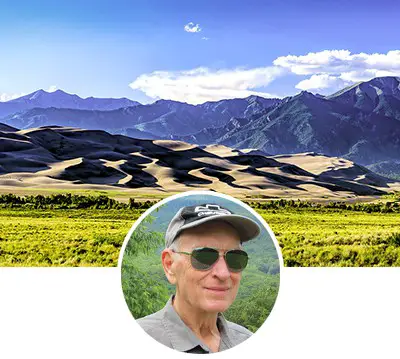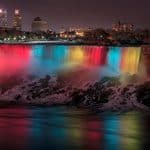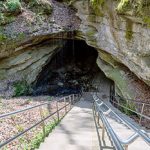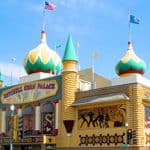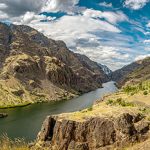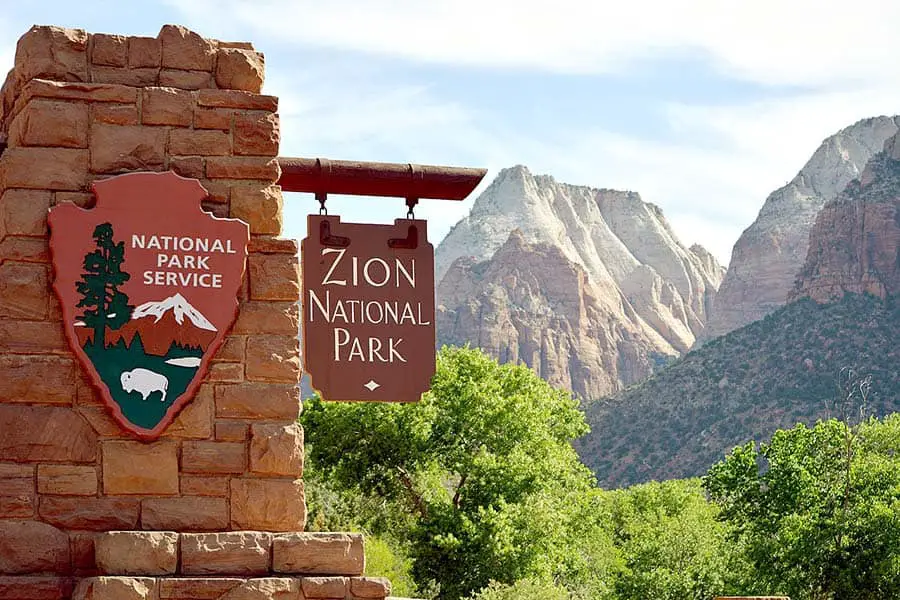
Zion National Park’s dramatic desert mountains and sparse vegetation attract over 4 million visitors each year. Appreciating the rugged beauty of America’s fourth most visited National Park is best done by seeing it in person. However, you might be wondering, can you drive through Zion National Park?
Most of the year—March through November—Zion Canyon Scenic Drive, Zion’s main road, is closed to private vehicles. Instead, the park uses a free shuttle service to transport visitors around the park. When it isn’t shuttle season, visitors can drive their vehicles on the road.
Zion National Park’s shuttle is a unique system that helps control traffic and congestion on the road so that visitors can get in to enjoy the beauty of the park sooner. As you read on, you’ll know how to best navigate during a visit to one of the most popular national parks in the country.
Navigating Through Zion National Park
Zion National Park is in a small southern Utah town called Springdale. Springdale is 40 miles away from the larger city, Saint George. Zion is home to red-rock desert and conifer woodlands, which contribute to the diversity of landscape and scenery.
Zion National Park covers 148,016 acres dotted with peaks over 6,000 feet. Sheer sandstone walls fall into deep green canyons below. Due to this unique scenery, Zion National Park is very popular. In the past, this led to crowded roads and parking.
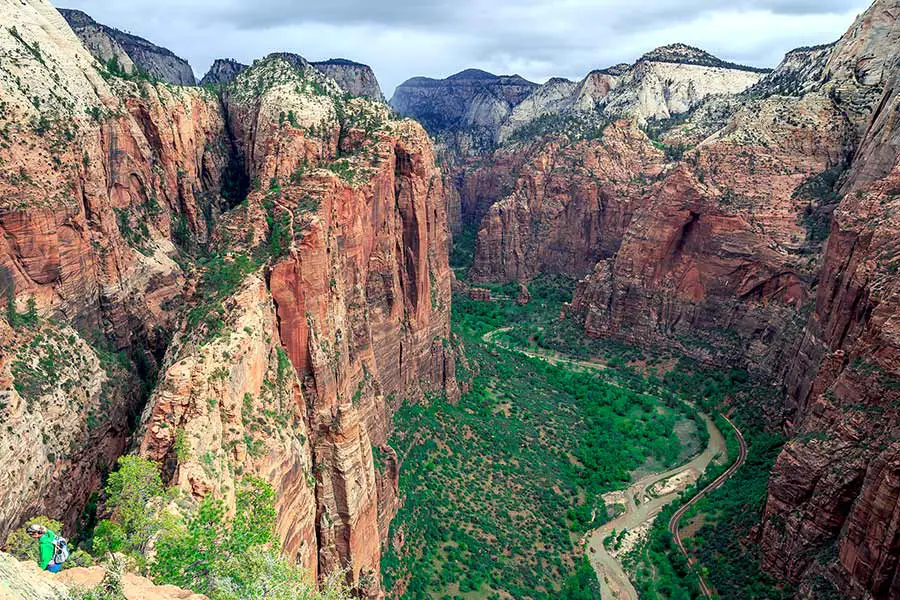
Eventually, the National Park Service implemented a free shuttle service on Zion Canyon Scenic Drive to solve this problem during the busiest time of the year. Only shuttles are allowed on the road, no personal vehicles; this helps to make sure the service runs smoothly. The shuttles also help preserve the vegetation throughout the park by reducing parking needs.
Getting to Zion National Park is done by driving on Route 9, also known as Mt. Carmel Highway. The main parking lot for the park is near the Zion National Park Visitor’s center. This lot usually fills up by mid-morning on a busy day in the summertime. If the parking lot is full, there are other locations to park in Springdale.
Though the parking lots in Springdale are further away, there is a free shuttle from Springdale to the entrance of the park. When parking in Springdale, it’s important to pay attention to any “no public parking” signs to avoid a fee.
During peak visitation times like summer and holidays, finding a parking spot can be challenging in or out of the park. So if you plan on visiting during the busy season, try to plan extra time for travel and wait times.
Within the park, there are two separate shuttle routes, and both are free:
- The Springdale Shuttle – This is the shuttle that stops throughout Springdale. If visitors are staying in Springdale, they can easily find the closest bus stop and not worry about looking for parking. The destination of this shuttle is the pedestrian entrance to the park, where visitors can pay the entrance fee and enter the park. The pedestrian entrance is very close to the visitor’s center, where the next shuttle leaves from.
- Zion Canyon Shuttle – This shuttle takes guests to different places within the park. It takes the scenic drive up the main canyon. It stops at popular locations where there are trailheads to various hikes.
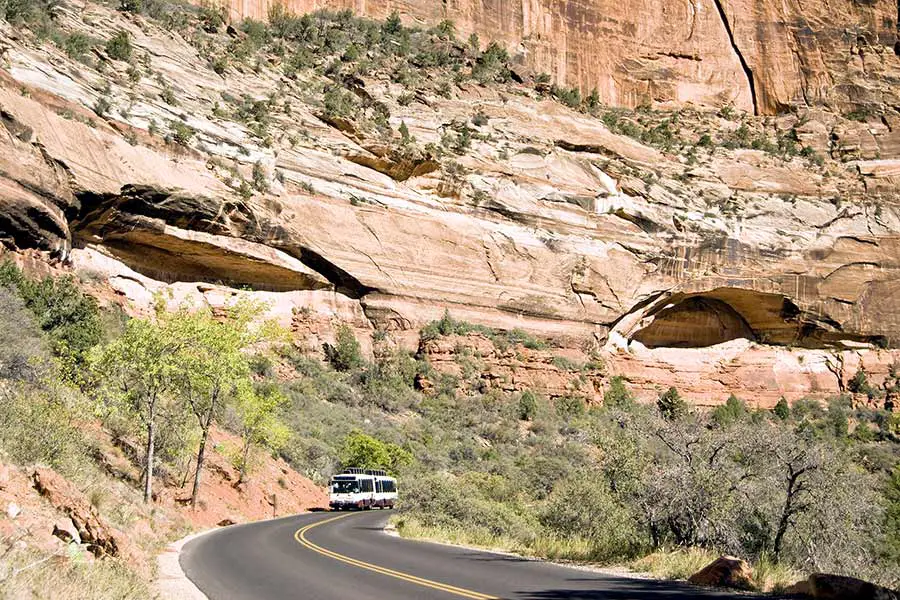
The path the Canyon Shuttle follows is out and back—it gets to the end of the road, then turns around and comes back. The first shuttle of the day typically leaves the visitors center around 7:00 am, and the last shuttle leaves the visitors center at 5:00 pm.
It’s a good idea not to wait until the last bus just in case the final shuttle is full on the way back. At all the stops, the shuttle does not require reservations. Unfortunately, that means sometimes there are long lines during the peak visitation season in the park.
When it’s not shuttle season—December through March—personal vehicles are allowed up Zion Canyon Scenic Drive.
Road Trip Answers Fun Fact: The name Angel’s Landing comes from when this area was seen by a Methodist minister who said that only angels might land on it. Then, in the 1920s, a trail was built to the top.
Other Posts of Interest
- Does US Route 6 Go Coast To Coast?
- Is It Hard To Drive in Chicago? (+Best Routes)
- Can You Drive Through Death Valley?
- Can Anyone Drive On The Bonneville Salt Flats?
Points of Interest in Zion National Park
The shuttle stops at the main points of interest within the park. Here are some of the main stops:
- Zion Visitor Center – Here travelers can find interesting facts about the park along with helpful resources for their visit.
- Canyon Junction – This stop provides easy access to the river and the end of the Pa’rus trail.
- Court of the Patriarchs – At this stop, there is a short walk to a scenic outlook of numerous red-rock cliffs. These towering peaks help tourists appreciate the sheer size of the rock formations in the park.
- The Grotto – A picnic area with a water fountain and non-flush bathrooms. This area is a very popular stop because it’s the trailhead for a few hikes—Angel’s Landing, West Rim Trail, and Kayenta Trail. Of these, Angel’s Landing is the most popular. At the top of the hike, there are breathtaking views of the canyon below. It is no wonder this is one of the most popular places in the park. Due to overcrowding on the trail, a permit is required to hike the trail.
- Big Bend – This stop is more for the views as there are no hikes that start here. This location is an excellent place to watch climbers work their way toward Angel’s Landing. Additionally, this stop is a good place to hike if you don’t have a permit to hike Angel’s Landing but still want to see it.
- Temple of Sinawava – This stop is the shuttle’s last before turning around and heading back. It is a quieter spot where visitors can walk next to the river. This location is where the riverside walk and Zion Narrows Day Hike both start. The Zion Narrows Day Hike follows the North Fork of the Virginia River. If you do this hike, prepare to walk through some water. The river is at the bottom of a canyon, so it makes for a relaxing, shaded walk later or earlier in the day.
How Long is Zion Scenic Drive?
The Zion Park Scenic Drive is a 6.2-mile paved road that weaves through the bottom of Zion Canyon. Red sandstone slabs jut into the sky on each side of the road.
Many of the rock formations look alien in their form and placement. These shapes are because much of the rock formation comes from thousands of years of ice, wind, and water shaping the landscape.
At the end of the road, there is a waterfall at the Temple of Sinawava, and if you’re lucky, it will be flowing.
Can You Ride a Motorcycle in Zion?
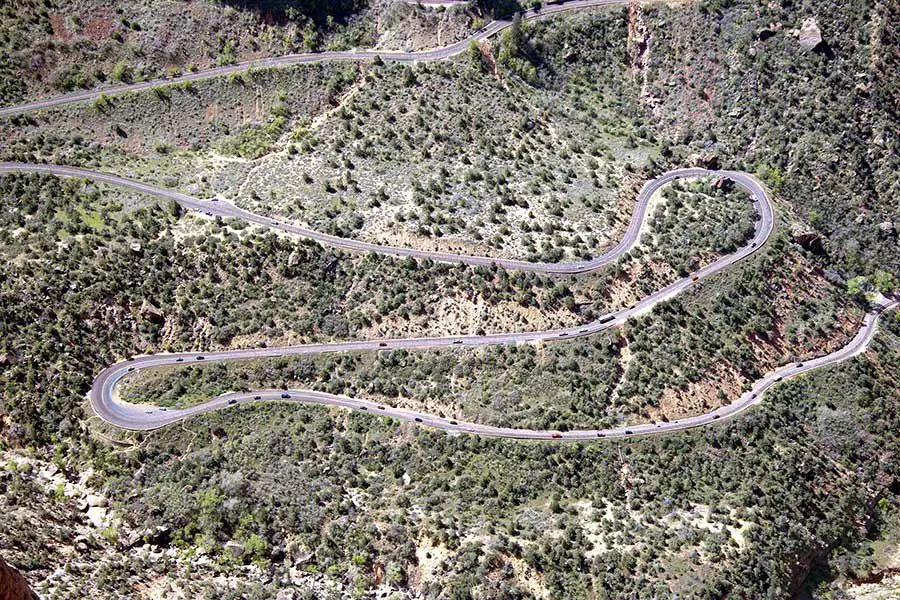
One of the most scenic roads in Zion to ride a motorcycle on is Scenic Byway 9 (SR-9). It winds through the southeast section of the park. This road is open to motorcycles and personal vehicles. Though it isn’t the scenic drive through the canyon, it still winds through the mountains streaked with red and cream rock formations.
This road is popular with motorcycles because, unlike many desert roads, this one has many twists and turns and offers scenery like mountains and cliffs.
This 54-mile road is open year-round. It usually takes about 1.5 hours to drive. However, since it cuts through the park, there is a fee for going through ($30 for motorcycles and $35 for vehicles).
Note: If you are a motorcycle enthusiast, another great ride is Tail of the Dragon Road, located in Tennessee and North Carolina. It is a stretch of US Highway 129 that covers 11 miles and has 318 curves!
Does Zion National Park Get Snow? And is it Worth Visiting in Winter?
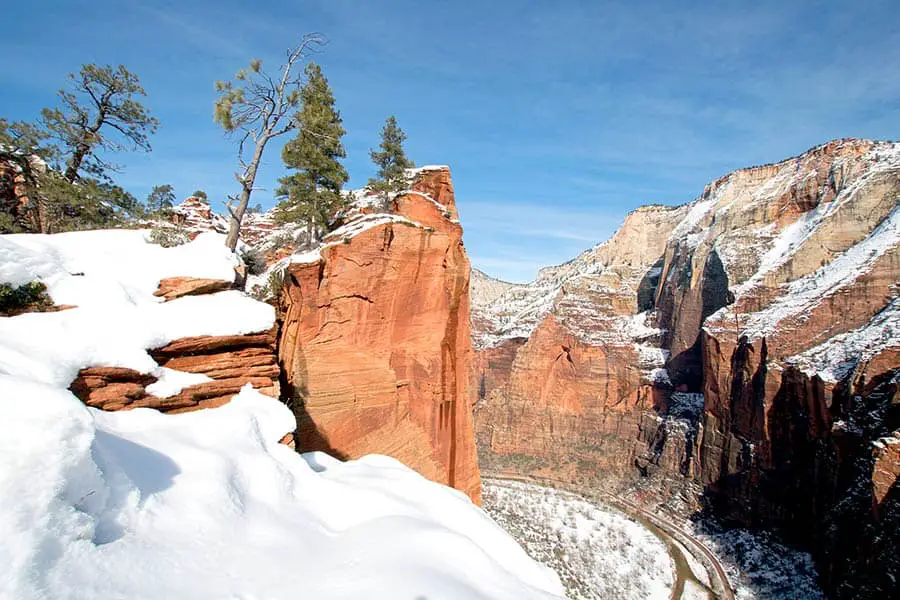
Zion does get cold enough for snow in the winter, despite the high summer temperatures. The park sees occasional snow in the winter, but nothing substantial. Since it isn’t completely covered in snow, it is still a very popular destination in the winter. However, it isn’t nearly as busy as the summer.
For those looking for less crowded areas, the northern sections of the park, like Kolob Canyon and Kolob Terrace, are good options to avoid the crowds, though they are not accessible via the Zion Canyon Scenic Drive.
Can I Ride my Bike in Zion National Park?
Cycling is an exciting way to see Zion; however, cyclists are required to follow a few rules in Zion:
- Bikes are permitted on all park roadways and the Pa’rus Trail, which is a wide, paved trail.
- Bikes are prohibited on all other park trails.
- Riders must ride single file on the right side of the roads and trail in groups no larger than 6.
- Bikes can be taken on the shuttle, but they must be loaded on the front of the shuttle.
- If cyclists are riding on the shuttle route, they must stop and move over to allow shuttles to pass by.
- If riders are cycling on the Zion-Mt. Carmel Highway (not a shuttle route) they cannot ride through the 1.1-mile tunnel and must catch a ride through (often done by hitchhiking).
One of the Nation’s National Treasures
Visitors shouldn’t pass up on an opportunity to visit Zion National Park. The unique formations and astonishing views will be worth every penny spent on a trip. Though driving a personal vehicle to the most popular parts of Zion National Park isn’t an option for much of the year, taking the shuttle helps adventurers take in more of the park without worrying about traffic or parking.

